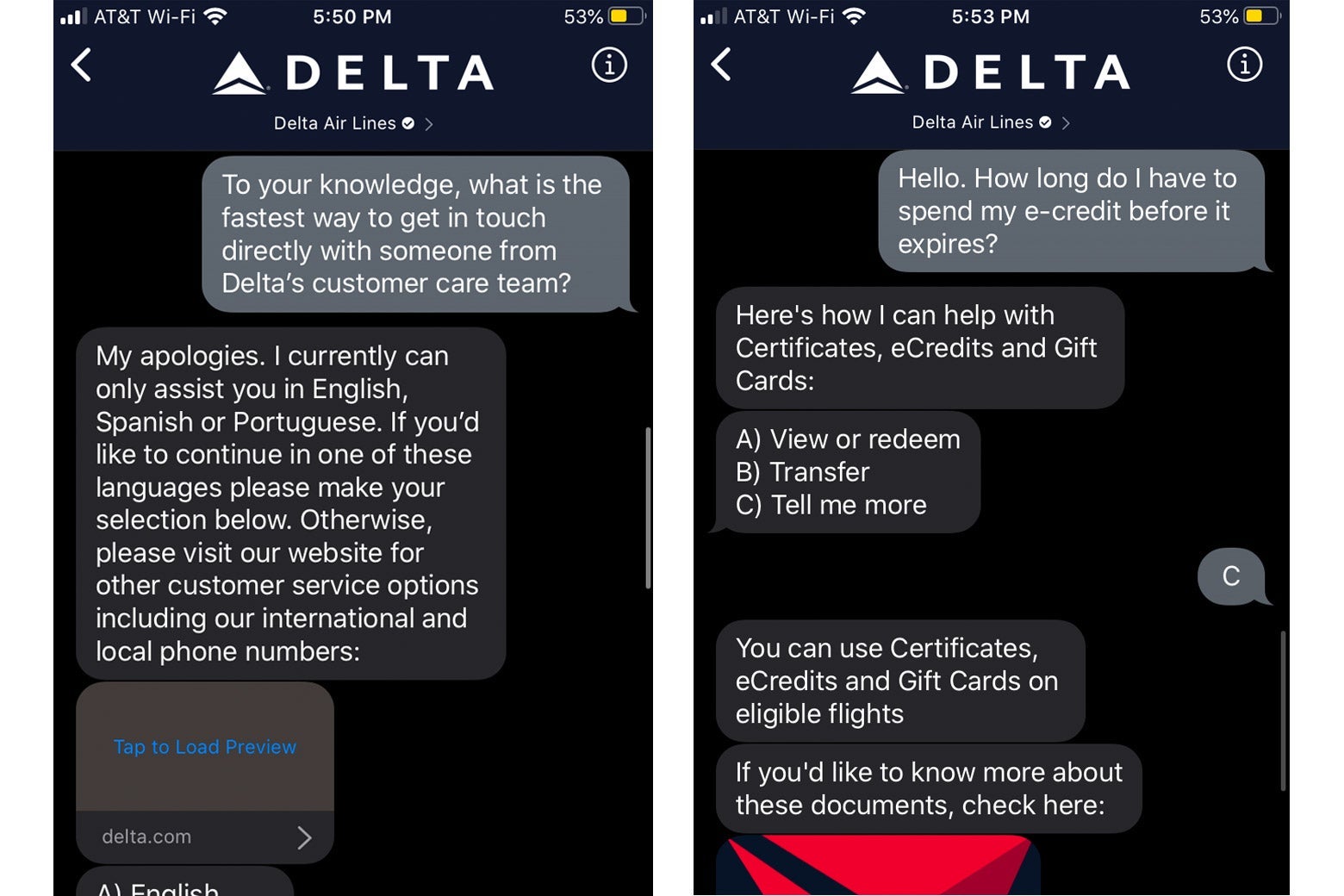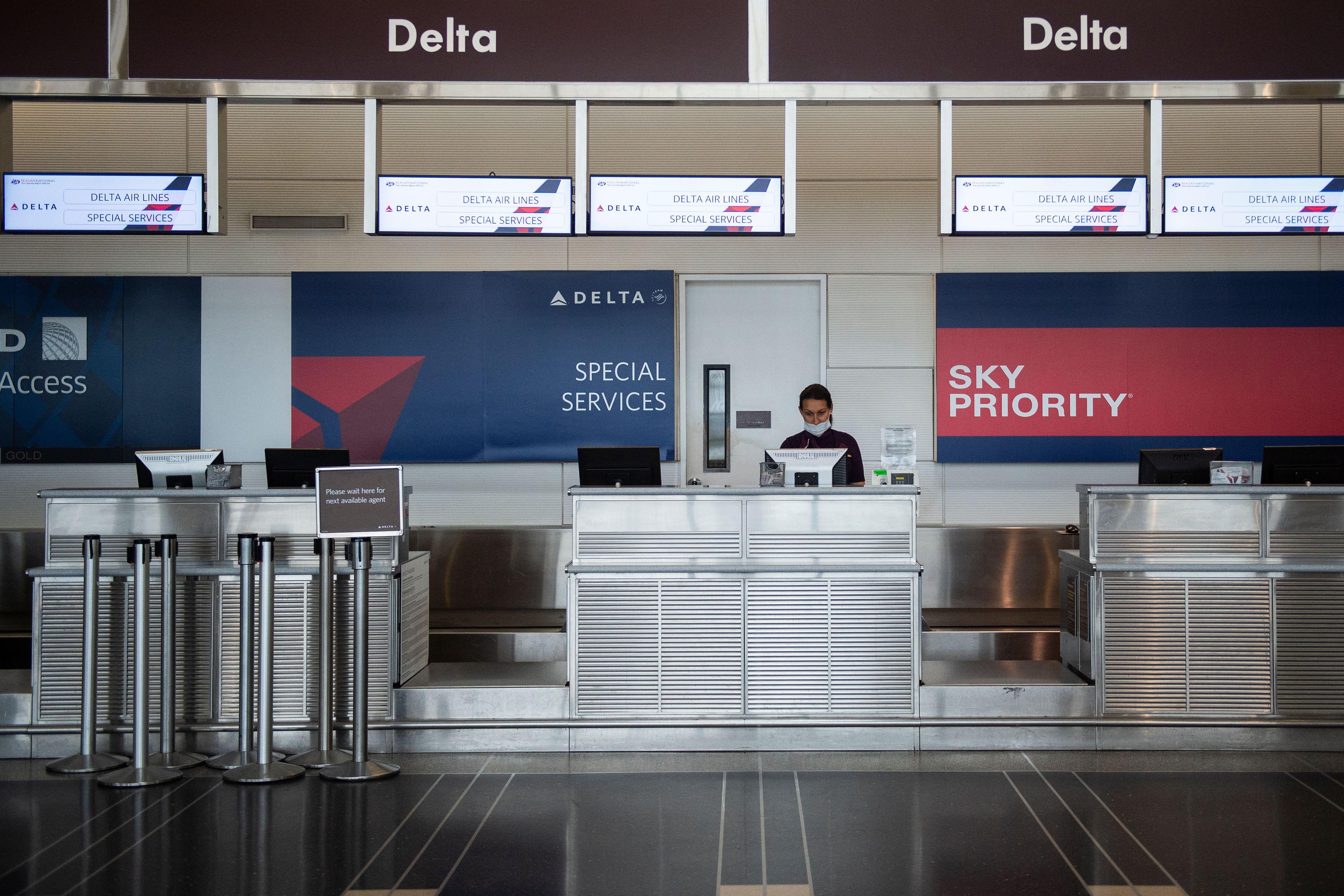In a 2012 comedy special, John Mulaney channeled the universal frustration of air travelers trying to get through to customer service. “I’ll book a ticket on some garbage airline,” he said. “I don’t want to name an actual airline, so let’s just make one up. Let’s call it Delta Air Lines.”
Once again, no one’s being shy about naming and shaming Delta. In recent weeks, as the airline industry has continued to struggle with severely reduced demand, people have flooded Delta’s Facebook and Twitter pages with complaints of poor customer service—even more, it seems, than usual, and noticeably more than Delta’s competitors. The main complaint: that these customers can’t even get in touch with the airline.
Could these missives—and dozens and dozens more—be outliers? Or, faced with a pandemic, an economic crisis, and public health rules that make packing an airplane both unappealing and ill-advised, has Delta … just ghosted?
To find out, I set out to contact a Delta customer service representative by any means possible. I began with the carrier’s phone lines. When I first dialed (800)221-1212—Delta’s general sales and services number—I was greeted by an automated message:
Due to extremely high call volume, we are unable to answer your call. If you need to travel within the next week, please try to call again later, or message us from Delta.com/needhelp or by clicking the ‘message us’ button in the ‘more’ section of the Fly Delta App.
Then the call ended.
I redialed the number. And again. Each time, I received that same automated message. It was only on my fourth call, later the next day, that I was put on hold. I remained on the line for four hours and 53 minutes before hearing from a Delta employee. The interaction was brief, although the representative managed to address a simple question about my Delta eCredits before sending me on my way.
Curious if there was a way to hear from a Delta representative in less than four hours, I followed the advice of the automated phone response. But there is no “message us” button at Delta.com/needhelp, though I was able to fill out an online comment/complaint form. It’s been five days, and I have yet to receive a response. When I attempted to contact the company through the Fly Delta App, I ran into additional issues. I sent my question to Delta, whose chatbot representative greeted me with “Of course.” I then restated my question, asking about the ways that a Delta customer could speak directly with a Delta employee. This only complicated the situation.
“My apologies,” said the bot. “I currently can only assist you in English, Spanish, or Portuguese. If you’d like to continue in one of these languages, please make your selection below.” (To be clear, my question was in English.)
I selected “English” from a drop-down menu and restated my question for the third time. Once more, the chatbot explained that it could only process queries in English, Spanish, or Portuguese. I pivoted, asking a more pointed question about eCredits that would, in my mind, be more bot-friendly. While the service managed to discern the subject matter of my new inquiry, I realized that the Fly Delta App could not help me realize my goal of speaking directly with a Delta employee.

Next, I followed the example of other customers: I went to Facebook and Twitter. Both pages had banners that read, “Our response to your message may come with a delay. We are doing everything we can to get back to you as soon as possible.”
As it turns out, “as soon as possible” means 20 hours on Twitter, as a Delta representative responded to my tweet the next day.
On Facebook, the wait time was brief. A living, breathing Delta employee responded to my direct message in just 10 minutes.
I contacted Delta for a comment about the complaints about their customer service, and the company responded with this statement:
As Delta continues to manage through the impact of the COVID-19 pandemic, our Reservations and Sales team is working diligently to serve our customers. Many of our specialists are returning from voluntary leaves of absence this week, and Delta is expanding the training and capability of all specialists to be able to better serve the needs of any customer. We are also working to adjust and enhance technology to further support our specialists and continue to enhance our self-service options available on delta.com and the Fly Delta App. We appreciate our customers’ patience and apologize for any inconvenience some may be experiencing.
While I succeeded in contacting Delta employees through Facebook, Twitter, and through their phone service, it took a lot of attempts and (other than on Facebook) long waits. It’s true that airlines are facing an unprecedented crisis, one which has fallen heavily on their call centers and customer support teams. But these companies also just got a $25 billion bailout, have faced little competition from one another for a generation, and generally have gained a reputation for neglecting customer frustrations without fear of retribution. Now those frustrations are multiplying. Months into the pandemic, people are once again getting comfortable flying again. But so far, the customer service experience isn’t making getting back on a plane any easier.
